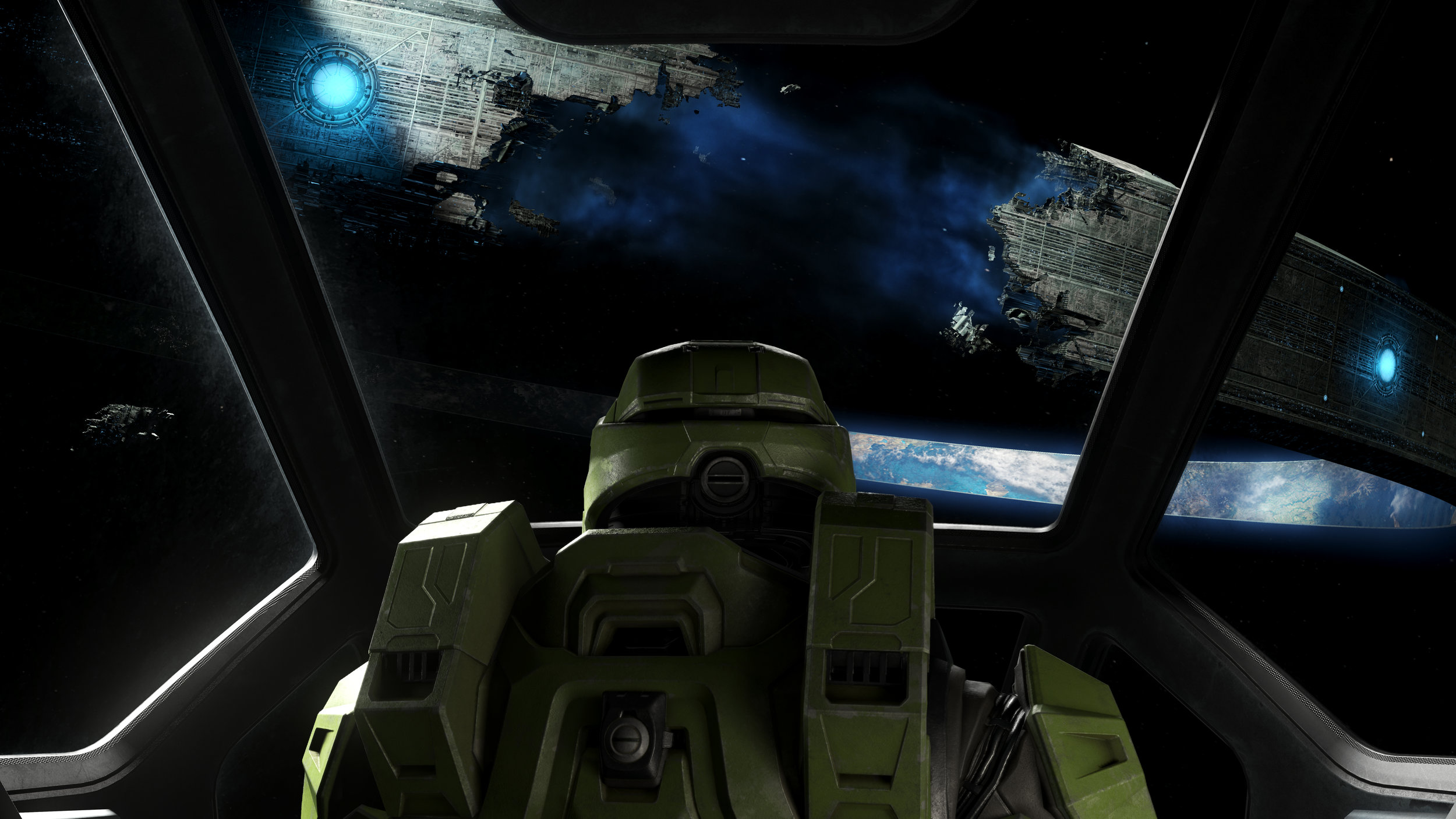Halo Infinite: Discover Hope
Microsoft . 343 Industries . June 2019
We wanted to create something tense, emotional, and triumphant.
We wanted to fill the world with questions and anticipation.
For Halo, E32018 was a reset in audience expectations. For E32019, the focus shifted to character development. One common misconception around this trailer was that it was outsourced to another company. Not true. Instead, a small team within 343 worked on it in Halo’s game engine. This scene was exactly what we intended to use as the game's opening, and our goal was to create something we wouldn't discard as Halo Infinite was already in Production.
For the shipping game, the cameras, scripting, and scenes were exactly what we had shown, but our game tooling and engine code had been significantly updated. These updates, along with the need for performance scaling across multiple SKUs, meant that we had to go in and refactor some of the elements. Among a litany of improvements, the characters were updated with wear and weathering, the lighting was vastly altered, and the animation was improved to incorporate new facial solves for the shipping version. We dedicated a year to revitalizing it to take advantage of the reworked rendering stack, FX, lighting systems, and animation compression methods. This was the first scene we shot and the last scene we finished.
Director: Dan Chosich
Written By: Paul Crocker, Dan Chosich
Assoc. Creative Director: Paul Crocker
Art Director: Nicolas Bouvier
UI Artist: Jeff Christy
Sandbox Art Lead: Matt Aldridge
Music Supervisor: Joel Yarger
Audio Director: Sotaro Tojima
Composer: Curtis Schwitzer
Sound Design: Kyle Fraser
Spiritual Goal
Our goal was to speak to the theme of rebirth. The Pilot resuscitates Chief. Chief brings life and courage to the Pilot. The Pelican is brought back to life by Chief. It speaks to the potential of the world we're creating. Ultimately Chief is a symbol for that idea. The potential to be greater and to discover something within that makes you stronger. The Pilot becomes a symbol of strength and a symbol of human potential without fear.
For our audience the Pilot becomes permission to believe in the impossible. To remember what it's like to live with wonder. To jump without fear. To trust against all logic and when everything inside you says "hide." The kernel of that potential is everlasting because it's undeniable and pure. It's something we all strive for--courage, hope, assurance, leadership. While it’s always debatable whether or not this trailer speaks to the concept of hope, I do believe it speaks to the potential for greatness. It speaks to courage and the need to go within—toward the unknown.
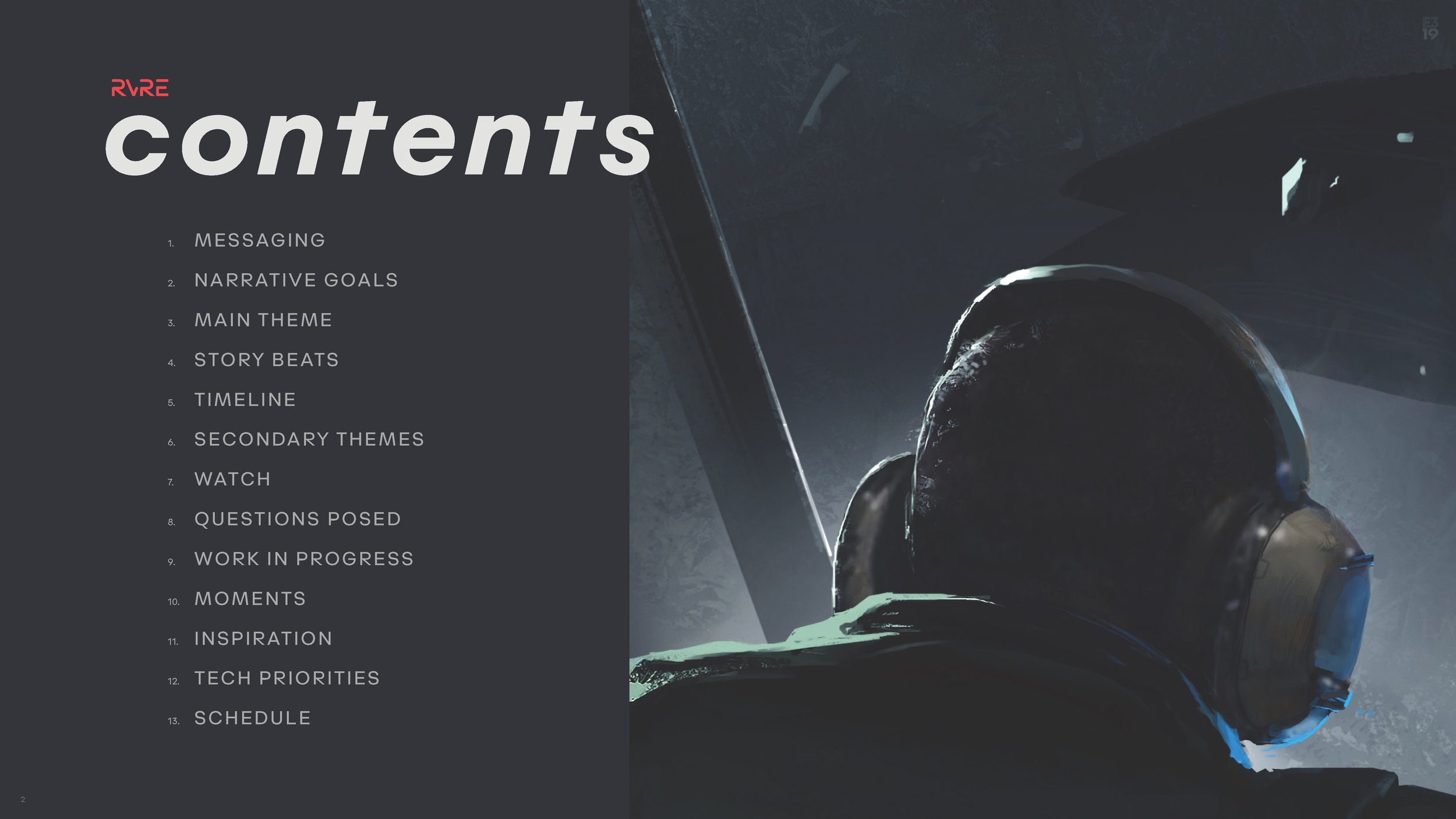














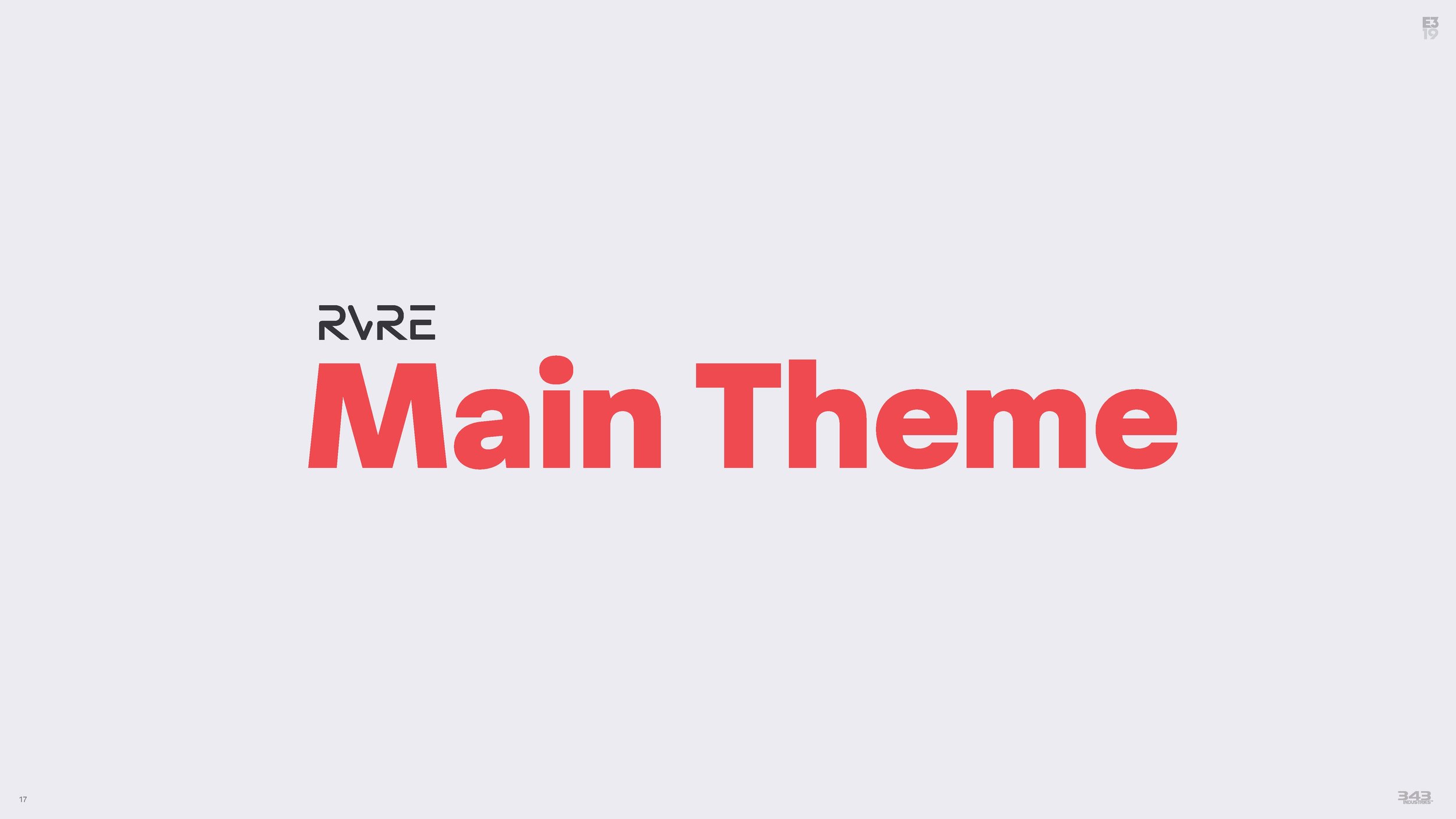


















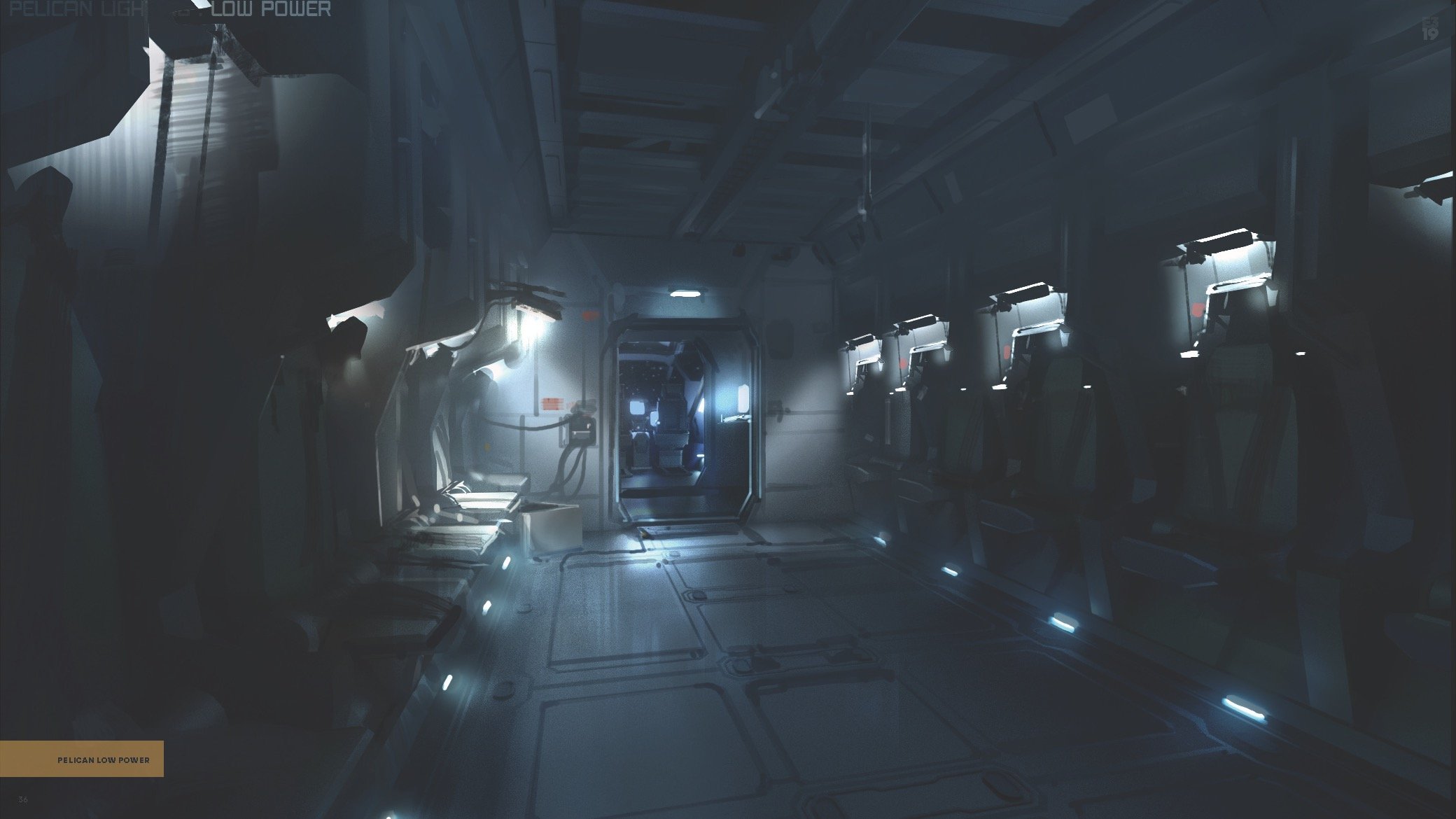



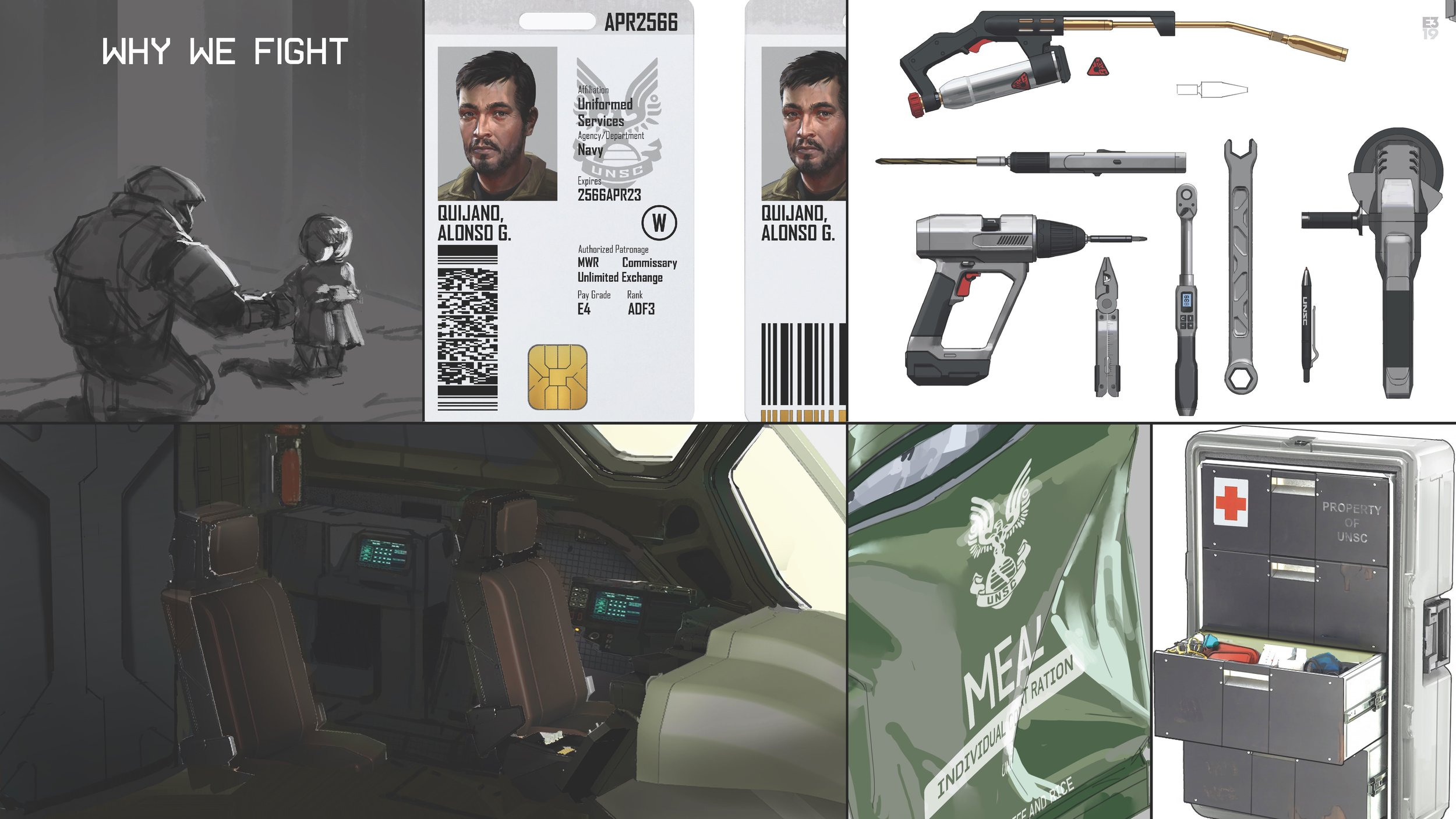








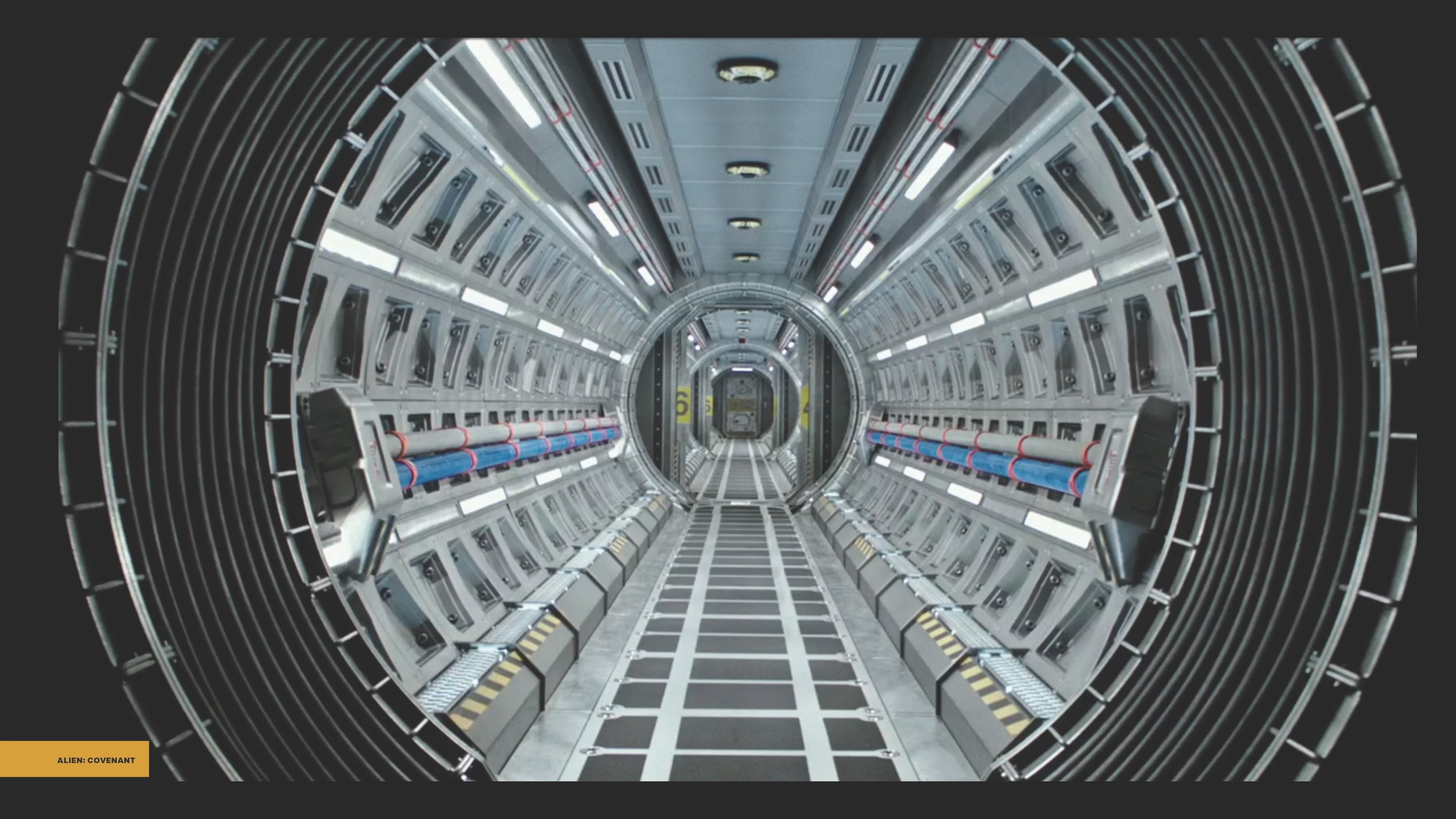

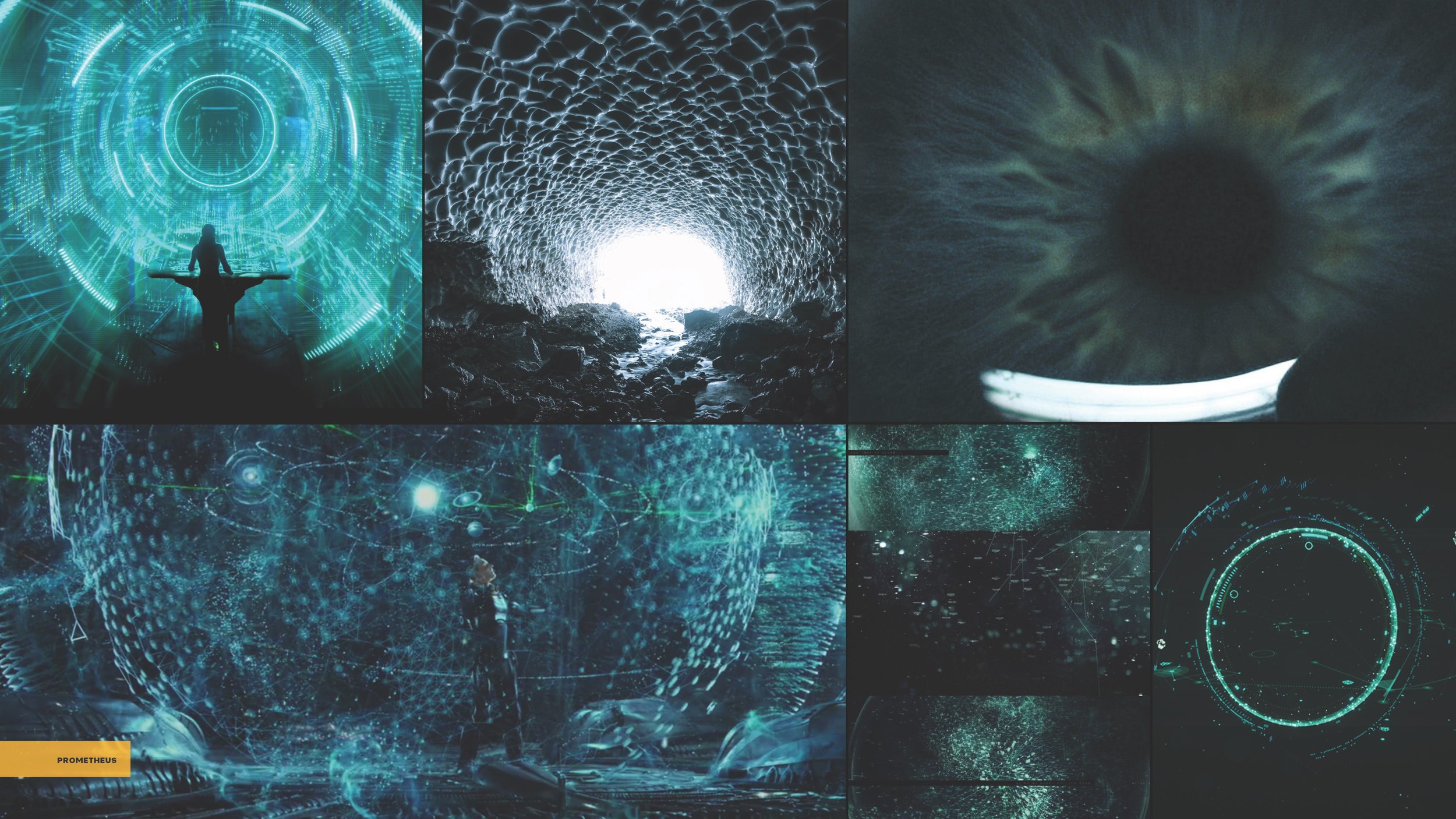





Team Alignment
The goals were to say to the world: Here are the major characters. Here is the way we tell story. Here is the new art style. Here is a glimpse at where we're going and the state of the world. Here is a story that poses questions, encourages mystery, discovery, and the act of heroism.
To the left side of this text is the presentation that I would end up giving to our team and Xbox Leadership.
It’s the full presentation with our hopes, dreams, and production schedule.
What changed between E319 and the shipping game (2021) is that all of the lighting had to be redone along with the character tech. Facial animations moved from a PCA compression to Blendshapes. The rendering system changed from deferred to forward rendering.
Calling Home
This was an invention of our lead sandbox artist, Matt Aldridge. We didn’t have enough time to create a highly detailed human mesh. Instead we created a physical rig of 3 Xbox One Kinect’s that shot simultaneously to capture a 180 degree view of an actress.
This is the same methodology that Radiohead used for their ‘House of Cards’ music video. In the video linked below the top section is myself testing it out at my desk.
When we redid this in 2020 we realized it would be great if we could actually include the child, so everything was reshot. The tech limitations of the Kinect in 2019 would have meant the mesh of the two actors would combine into a topology nightmare.
This is the only part of the entire E319 trailer that couldn’t actually ship because it was something like a 3 gig VDB mesh that could never store in lower platform memory. The tech that turned the geometry mesh into particles would end up being included in the shipping game.
Audio Play
One of the earliest tricks I learned in film school was to be a good audio editor. I would test my edits by closing my eyes. If the work was entertaining and comprehensible without visuals, I knew I had made something good. Using that logic, this was the first project where I began doing quick sound design mock-ups to establish the tone of a cinematic moment.
I discovered that when I feel creatively ‘stuck’ I tend think in terms of the space around the characters. When writing, I often ask myself what the character can hear because it helps create a layer of grounding to the scene. That’s where all of this stemmed from. What can the Pilot hear? How can sound transport the player to this isolated and vulnerable moment?
We adjusted the script from there and had an animator begin to lay out this scene. But from moment one, this scene existed as an idea, then an audio play, then turned into rough animation, and from there we worked on the cameras and overall blocking.
This audio play teased the idea that the Pilot was a playable character. He was not. That never got past the idea stage. It was something toyed with for a few weeks, but we quickly realized it would take too much development time to make him playable.
Screenshots







